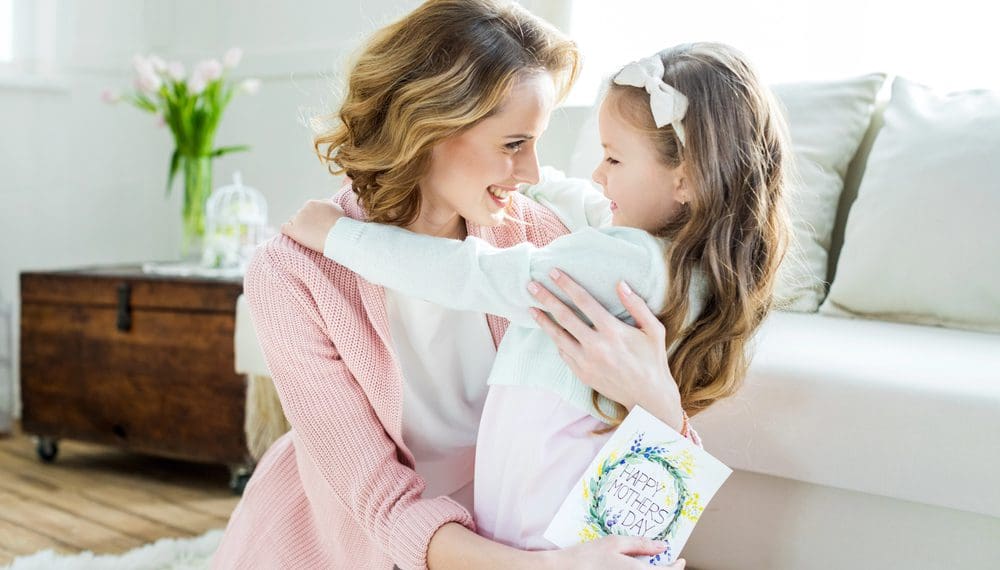Full Disclosure: Clicking on these links could mean a tiny commission for me, at no extra cost to you.
Separation anxiety in children can feel like an emotional rollercoaster – for both the child and the parent! It’s completely natural for kids to feel uneasy when parting from their caregivers, especially during significant transitions like starting school or moving to a new place. Common signs you might see include clinginess, tantrums, or difficulty sleeping alone. But don’t worry; this is manageable with the right approach!
What is Separation Anxiety?
Unless you have an online DNP programs or work within the mental health field, you may not be familiar with a common form of anxiety called separation anxiety.
Separation anxiety in children is a developmental phase where a child experiences distress or fear when separated from their primary caregiver. It’s a natural part of growing up, often surfacing between 6 months and 3 years of age, as children begin to understand object permanence: the realization that their loved ones exist even when not in sight.
While occasional clinginess or worry is normal, separation anxiety becomes a concern when it disrupts daily routines, such as going to school, sleeping independently, or engaging in social activities. This emotional response is tied to their need for safety and attachment, and though it can be challenging, it’s an important step in their journey toward building independence and trust in the world around them.
Symptoms of Separation Anxiety in Children
Children with separation anxiety may exhibit a variety of emotional and physical symptoms when faced with being apart from their caregiver. These symptoms often stem from their fear of losing a loved one or being left in an unfamiliar environment. Common signs include:
- Excessive Worry: The child may express intense fear about harm coming to their caregiver or themselves during the separation.
- Clinginess: They might refuse to let go, following their caregiver around the house or insisting on being held.
- Tantrums and Crying: Outbursts are common, especially when saying goodbye or anticipating separation.
- Difficulty Sleeping Alone: Bedtime can become a battle, with the child seeking constant reassurance or refusing to sleep without their caregiver present.
- Physical Symptoms: Stomachaches, headaches, nausea, or other somatic complaints often arise when separation is imminent.
- Avoidance of Activities: The child may refuse to go to school, attend playdates, or engage in activities that require being away from their caregiver.
- Constant Checking: Repeatedly asking questions about where the caregiver is or how long they’ll be gone.
These behaviors are a child’s way of expressing their fear and seeking reassurance. Understanding these symptoms allows parents and caregivers to address the root cause with empathy and proactive strategies.
Advertisement
⚡ Access Treatment Right Now
→ Online Therapy – Talk to a licensed therapist today through BetterHelp. Affordable, private, and convenient therapy starting at $65/week. Take the Free Assessment to get matched now.
→ Digital Psychiatry – Connect with a provider in 12–48 hours via Hims/Hers. Explore FDA-approved medication options — no insurance required. Get Started Today.
Recognizing the Signs of Separation Anxiety
Separation anxiety in children often reveals itself through emotional, behavioral, and physical signs, especially during or before times of separation. Recognizing these signs early is key to providing the right support. Some common indicators include:
- Intense Emotional Reactions: Persistent crying, clinginess, or distress when a caregiver prepares to leave.
- Fear of Being Alone: A strong reluctance or outright refusal to stay in a room or space without a trusted adult nearby.
- Nighttime Difficulties: Trouble falling asleep or staying asleep without the caregiver present, often accompanied by repeated nighttime awakenings.
- Avoidance Behavior: Refusal to attend school, daycare, or participate in activities that require separation.
- Physical Complaints: Unexplained headaches, stomachaches, or other physical symptoms that arise before or during separation.
- Constant Reassurance-Seeking: Frequently asking questions like “When will you be back?” or “Are you coming to get me soon?”
- Tantrums or Meltdowns: Dramatic outbursts that occur when separation feels inevitable or unmanageable.
These signs are your child’s way of expressing fear and seeking comfort. While challenging, understanding these behaviors as developmental signals helps you support your child with empathy and strategies to build independence over time.
Supporting Your Child Through Separation Anxiety
Helping a child navigate separation anxiety requires patience, understanding, and consistent support. Here are some practical and nurturing strategies to guide your child through this challenging phase:
1. Validate Their Feelings
When or if your child starts to exhibit signs of separation anxiety, comfort your child. Maintain eye contact so they understand that they’re being listened to and that you aren’t angry at them for being afraid or fussy. Reassure them that you know that it can be scary to be apart from the ones you love, but that the separation doesn’t mean you’re going away forever.
You can also acknowledge their emotions by saying things like, “I understand that you feel scared when I leave.” Validating their fears helps them feel heard and reassured.
2. Stay Calm
You also want to remain calm. Separation anxiety is a state of fear, and yelling at or threatening children while they are in this state confirms their feelings of fear and abandonment. Not only does it teach them their fear during separation is justified, but that they aren’t safe in expressing that fear to their parents or caregivers.
Additionally, children often mirror their caregivers’ emotions. If you remain composed and positive during separations, they’re more likely to feel reassured.
3. Exchange Anxiety for Excitement
To build your child up, try to create a sense of excitement. To do this, talk about the things you will do while you’re together later on. Talk about the games you will play or the places you will go. Your child is likely scared to be apart from you because they haven’t been apart from you since they were born. Use the promise of reunion to shift the fear response to excitement.
4. Practice “Short and Sweet” Separation
When you know elongated separations (pre-school, daycare, early school, etc) are coming up, practise separations by introducing short separations gradually. Leave your child with a trusted friend or parent while you run an errand or two. Gradually increase the amount of time (reasonably so) that your child spends apart from you, building their resilience and practice at being separated.
Additionally, avoid prolonging goodbyes, as this can increase anxiety. Say goodbye confidently and let them know you’ll return soon.
5. Start Small
Gradual exposure to short separations can help your child adjust. Begin by stepping out for a few minutes and gradually extend the time away as they grow more comfortable.
6. Create a Predictable Routine
Establishing a consistent schedule for goodbyes and reunions can build a sense of security. A short, cheerful goodbye ritual—like a special handshake or hug—can make transitions easier.
7. Use Comfort Items
Comfort items for kids can be a powerful tool in easing your child’s separation anxiety. These items provide a sense of familiarity and security, helping your child feel connected to you even when you’re not physically present. They act as tangible reminders of safety and love, making transitions smoother.
Consider gifting your child items that they can carry with them throughout the day to provide reassurance and distraction. For instance, a worry stone is a simple yet effective tool they can hold or rub when they feel nervous, offering a calming sensory experience. Similarly, a fidget rings for children (also known as spinner rings) provides a discreet way for children to channel their anxiety and focus their energy.
8. Provide Reassurance Without Overdoing It
Let your child know where you’ll be and when you’ll return, but avoid repeatedly checking in, as it can reinforce their fears. And of course, celebrate those small wins, like staying in a room alone for a short time or playing independently.
9. Seek Professional Help if Needed
If your child’s separation anxiety becomes severe or interferes with daily life—such as refusing to attend school, persistent physical complaints, or extreme distress during separations—it may be time to seek professional support. Therapists and counselors specialize in helping children and families develop strategies to manage anxiety and build resilience.
One increasingly popular and accessible option is online digital counseling. Platforms like BetterHelp, Talkspace, or child-specific services provide virtual therapy sessions that allow teens and families to connect with licensed professionals from the comfort of home. This approach is particularly helpful for families balancing busy schedules or for children who feel more comfortable opening up in a familiar environment.
Here are some of our favourite online platforms for therapy:
- Best for Availability: BetterHelp
- Best for Couples: ReGain or Our Ritual
- Best for Affordability: Talk Space
- Best for Psychiatry: Brightside
- Best for Teens: Teen Counseling
- Best for Anxiety and Depression: Brightside
- Best for LGBTQIA+: Pride Counseling
Online counseling can include individual therapy for the child, family therapy to address shared dynamics, or parent coaching to equip caregivers with tools to support their child. Techniques such as cognitive-behavioral therapy (CBT), play therapy, and mindfulness exercises are often used to help children reframe their anxious thoughts and develop healthy coping skills.
Final Thoughts on Helping Children with Separation Anxiety
Separation anxiety in children is a natural part of growing up, but it can feel overwhelming for both the child and the caregiver. By understanding the signs and causes, you can approach this phase with empathy, patience, and effective strategies. Whether it’s using comforting tools like worry stones and fidget rings, creating consistent routines, or seeking the guidance of an online digital counselor, every small step you take helps your child feel safe and supported.
Remember, this is a journey of growth for both of you. With your encouragement, your child will not only learn to manage their anxiety but also develop the confidence and resilience needed to face future challenges. You are their biggest ally, and together, you’ll navigate this phase and emerge stronger.
Additional Resources
At Anxiety Gone, we believe in healing together. We’ve partnered with trusted wellness organizations to bring you the most effective tools, insights, and support. Some links may earn us a commission — always at no extra cost to you.
Join The Club
Connect with our private self-care community for daily support, exclusive tips, and inspiration. Join us today
Talk Therapy
Get matched with licensed therapists online through BetterHelp and begin your healing today. Start now
Hims/Hers
Receive personalized, affordable mental health care + medication from home — no insurance required. Learn more
Mental Health, Right to your Inbox
Subscribe to our newsletter for a place to rest your mental health and find ways to support your journey. Sign up
Emotional Freedom Technique
Tap your way to calm with scientifically backed stress relief. Our readers receive a 14-day free trial! Try EFT now
Mindfulness App
Access 2,000+ guided practices to support your mental health wherever you are + exclusive discount when you upgrade Try it
Online Breathwork
Experience calm and reset your nervous system with guided sessions and receive your first month free . Get started
Find a Helpline
If you need immediate support, visit our directory to find help near you. See helplines









